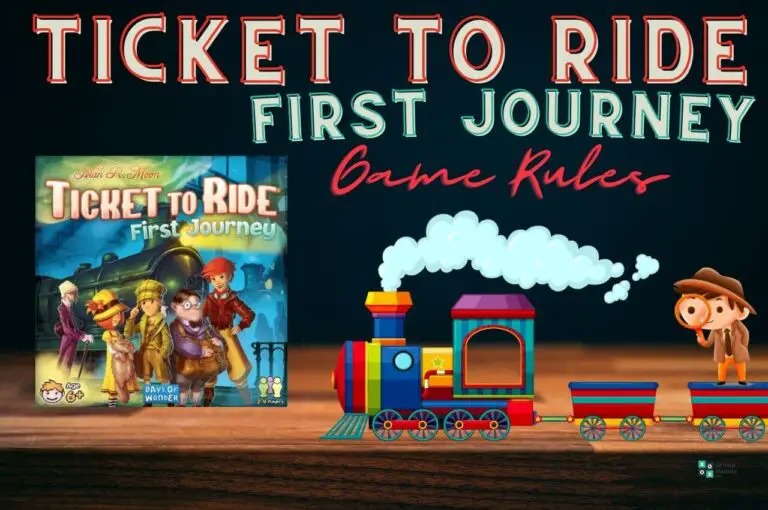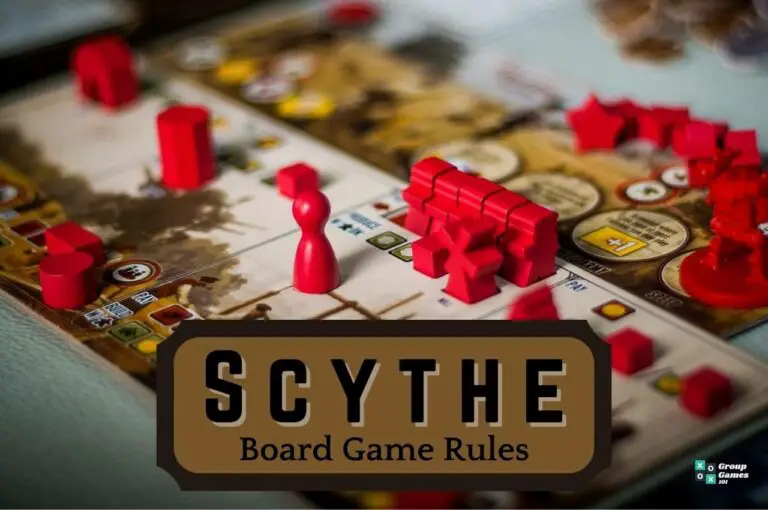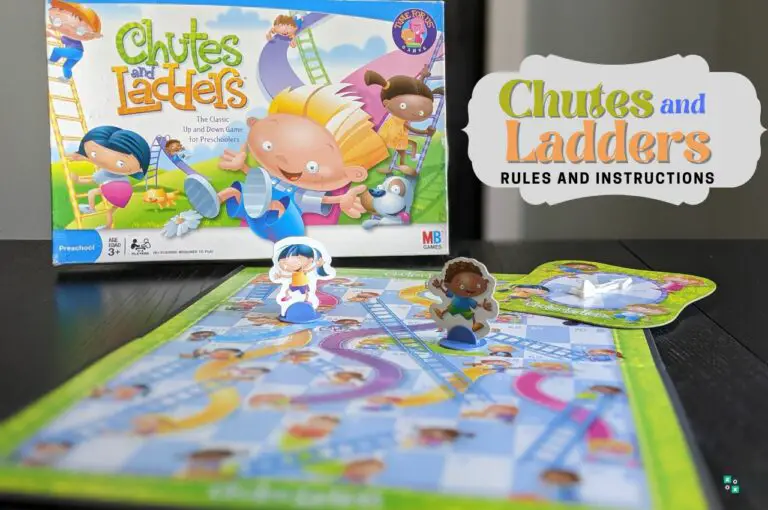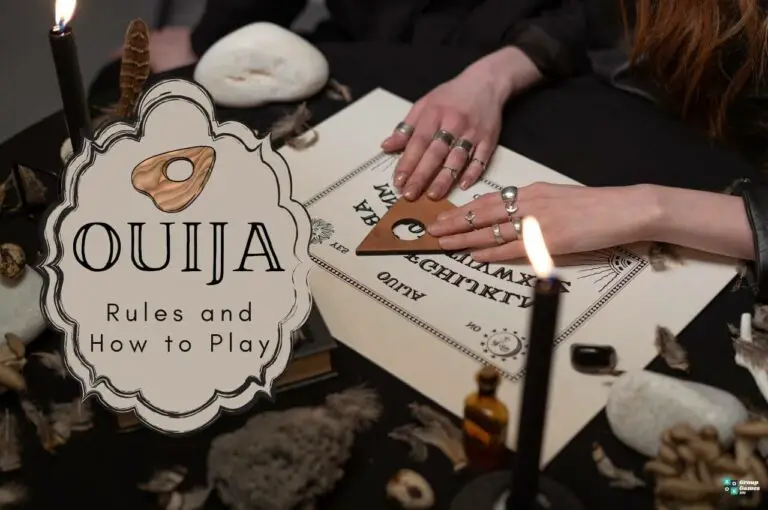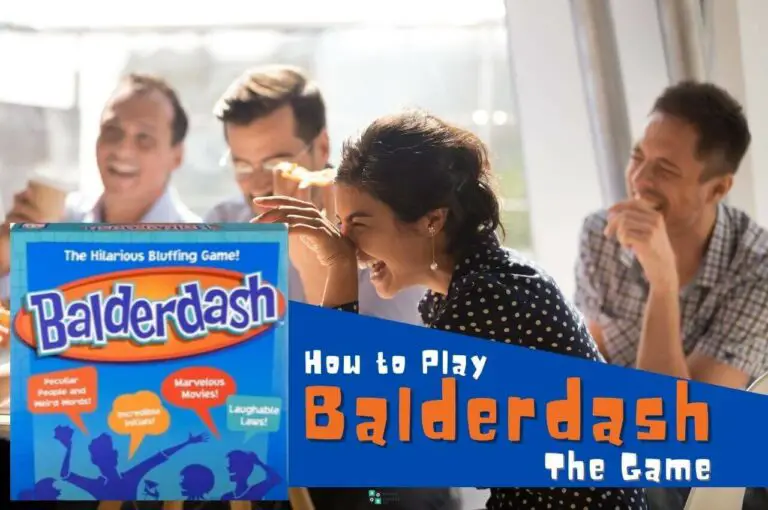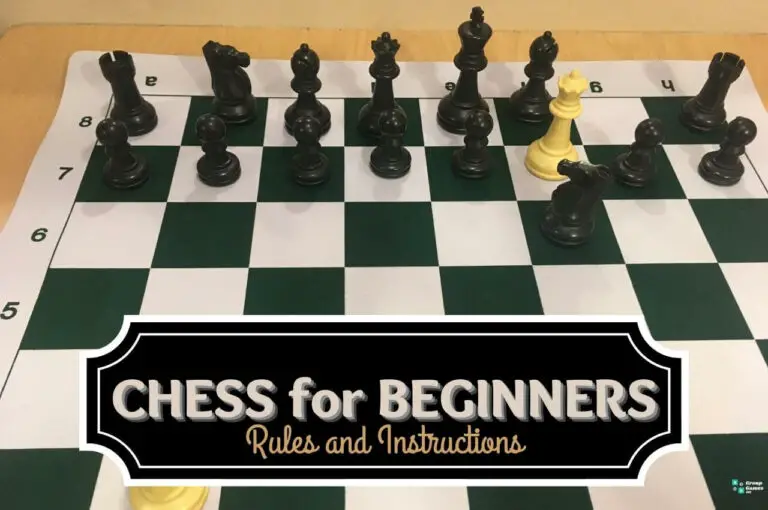If you’ve ever wanted to purchase multiple properties as a T-Rex or toy duck, this game is for you! This Monopoly game is simplified into a fast-paced kid-friendly edition. Read on to learn all the Monopoly Junior rules and gameplay instructions.
Since 1990, youngsters can experience the popular Monopoly board game. The objective is still the same, but the rules are easy for kids to learn!
This Monopoly Junior rules guide will cover the following:
- What is Monopoly Junior?
- A brief history of Monopoly Junior
- What you’ll need to play Monopoly Junior
- Monopoly Junior Rules
- How to play Monopoly Junior (Video Tutorial)
- FAQs
Read on to learn how to play Monopoly Junior.
What is Monopoly Junior?

Monopoly Junior is a simplified version of the traditional Monopoly board game designed especially for children. Players take turns purchasing properties and paying rent on occupied spaces to collect the most money.
Number of Players: 2-4
Ages: 5+
Difficulty: Easy
Length of Play: 20-30 Minutes
Category: Board Games, Children’s Games
Similar to: Monopoly, Candy Land, Life Junior
Main Objective: Be the player with the most cash collected by the end of the game to win!
Why We Love It: This is a youthful take on a classic board game. Kids of all ages enjoy playing Monopoly Junior. I play this game at home with my sons, ages 3 and 7.
A Brief History of Monopoly Junior
The classic Monopoly Game, developed during the Great Depression in America to teach finances, went into production in 1934. Parker Brothers originally manufactured the board game, and today Hasbro Gaming sells the newer editions of the game, including Monopoly Junior.
Monopoly Junior was released in 1990, and there are numerous kid-friendly editions of the game, including the Disney Princess edition, Dinosaur, Trolls, and Peppa Pig editions.
What You’ll Need to Play Monopoly Junior
Everything you need to play is included in this boxed set.
The complete game box contains:
- 1 game board
- 4 junior tokens
- 20 Chance cards
- 48 Sold signs
- 90 Banknotes
- 1 Die
- 4 Token character cards
Area of Play
Set up the board in the middle of your playing area. Shuffle the bills and Chance cards and place them in their designated places on the game board.
Each player selects a character token, retrieves the matching character card, and collects the 12 coordinating sold signs.
The four characters include:
- Little Scottie: This pup will lead the way to a collection of property purchases.
- Little T-Rex: This roarsome token will stomp and chomp the way to victory.
- Little Penguin: You can waddle around if you choose this cute creature!
- Toy Duck: Float around the game board with this adorable yellow duckling.
Decide which player will be the banker, and distribute the following amounts of money to each payer:
- 20 dollars to each player in a 2-player game
- 18 dollars to each player in a 3-player game
- 16 dollars to each player in a 4-player game
Players position their tokens on the Go space to begin.

Monopoly Junior Rules
The youngest player goes first by rolling the die. Gameplay continues moving to the left.
Roll the die and move your token to the number of spaces indicated from the roll.
In this game, you will always move forward around the board, and every time you pass or land on Go, you collect $2 from the banker.
Where did you land?
- An Unowned Property: You must buy an unoccupied property. Pay the bank the amount listed on the lot and place your sold sign on the space. Now, everyone will know who the owner of the lot is!
- An Owned Property: Uh oh! If you land on someone else’s space, you’ll have to pay rent to their owner.
For instance, if you are Little Penguin and land on a property owned by T-Rex, you must pay him the amount shown on the property.
If you land on your properties, you don’t have to do anything.
- A pair of matching owner properties: A pair of matching properties with the same owner is double the rent for trespassers.
If you land on the Ferris Wheel space and the Roller Coaster, which are owned by the same token, you must pay double the rent shown on the properties to the owner.
- Go: Collect $2 from the bank every time you land on Go or pass Go during the game.
- Chance: The Chance cards are precisely that- a gamble! If you land on a Chance space on the board, draw one of the Chance cards from the deck and follow the directions.
Chance cards can be positive or negative experiences, such as claiming a free space on the board or paying a fee to the bank.
- Go to Jail: If you land on Go to Jail, you must go directly to jail without collecting $2 for passing Go.
You can get out of jail on your next turn by paying $1 or use a Get Out Of Jail Free card if you have one. You can roll the die after being released from jail, and your turn continues as usual.
While in jail, you can still collect rent from other players who land on your property.
- Just Visiting: Landing on Just Visiting means you have to spend your turn there. You lose a turn. On your next turn, you roll and continue as normal.
- Free Parking: Just take a break and do nothing if you land on Free Parking. On your next turn, you roll the die and continue playing.
Your turn is over after following the steps indicated on the space you landed on. Now, the player to your left rolls the die and follows the steps accordingly.
Advanced Gameplay
For an added challenge, try playing Monopoly Junior with these additional rules:
- If you do not have enough money to pay another player, you must give your property to them.
- If you owe money to the bank, you must foreclose on your property, and it goes back on the market for another player to purchase.
How to Keep Score in Monopoly Junior
The game ends when a player is forced to declare bankruptcy. Bankruptcy occurs when someone does not have enough money to pay rent, buy property, or complete Chance card penalties.
Once a player becomes bankrupt, the game ends, and the player with the most money wins!
How to Play Monopoly Junior – Video Tutorial
Frequently Asked Questions
What age is Monopoly Junior for?
Monopoly Junior is recommended for children ages five and up. With some assistance from a grownup, younger children may also be able to play.
What is the difference between Monopoly and Monopoly Junior?
The traditional Monopoly game is much more involved than Monopoly Junior. For instance, in Monopoly, players buy, sell, and pay rent on properties of varying values using standard dollar bills.
Monopoly Junior only uses single dollar increments, and the board features kid-friendly properties such as an ice cream parlor, aquarium, and pet shop.
Can a 4-year-old play Monopoly Junior?
The game is recommended for ages 5 and up; however, a four-year-old can learn to play Monopoly Junior with some assistance and patience from the other players.
Other Games Similar to Monopoly Junior (Our Guides)
For your next family game night, be sure to check out these other fun children’s games:



